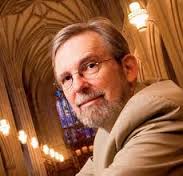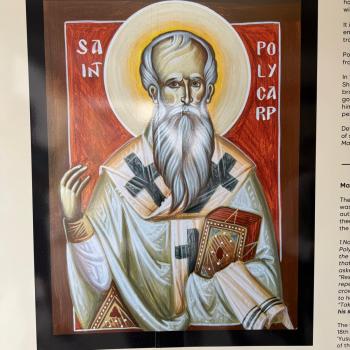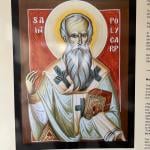In his chapter about Matthew’s use of the OT, Richard begins by making the valid point that Matthew shows far less reticence than Mark in making narrative claims about Jesus and linking them to specific OT texts, often citing those texts, and in the birth narrative especially using fulfillment formulae. He begins by noticing the ways in which Matthew 24 modifies Mk. 13, the apocalyptic discourse, for instance by specifying that the ‘abomination’ will take place in the Holy Place, the Temple. It is Matthew who makes crystal clear that Jesus is the fulfillment of Israel’s Scriptures,with some ten quotations using the fulfillment formula (Mt. 1.22-23; 2.15,17-18,23; 4.14-16; 8.17;12.17-21; 13.35; 21.4-5, and 27.9 and some late mss. have this formula at 27.35, though this is likely an interpolation based on Jn. 19.24 as Hays says on p.120). As Hays notes, about half of these formulae appear before Jesus is even baptized (if you add 2.5-6 and 3.3). So Hays concludes “Israel’s sacred history is presented by Matthew as an elaborate figurative tapestry designed to point forward to Jesus and his activity.” (p. 37). There are about 61 quotations of the OT in Matthew, and so as Hays says, the formula quotations make up a distinct minority of them. This is not counting the many allusions or echoes.
Then there is the indirect suggestion along the way that Jesus is the fulfillment not just of texts and prophecies and even institutions like the Temple sacrifices, but he is the fulfillment of OT precursors like Moses, David, the Suffering Servant (and I would add, though Richard doesn’t, Solomon and Wisdom).
Richard makes much of the fact that from the outset Jesus is presented as Emmanuel, namely the embodied presence of Israel’s God. But in what sense is God made manifest in Jesus (p. 39)? Hays of course draws attention to the ‘out of Egypt I called my son’ to show that not only is Jesus depicted as God manifest, but also as the one in whom the fate of Israel is embodied and enacted. The question is, whether Jesus is just seen as the fulfiller of Israel’s mission and purpose, or in fact Israel narrowed down to just one true Israelite. The use of Hos. 11.1 of Jesus raises this question quite directly. On p. 41 Hays concludes “The fulfillment of the prophet Hosea’s words can be discerned only through an act of imagination that perceives the figural correspondence between the two stories of the exodus and the gospel” (p. 41). He takes Mt. 2.17-18 where Jerm.31 is being cited as an example of metalepsis, in other words, the larger Jeremiah context is alluded to (see 31.15-17 in toto) and the knowing of it helps fill out what Matthew is driving at.
Another good example of making something more explicit in Matthew than we find in the parallel in Mark is the story of Jesus’ walking on water and getting into the disciple’s boat cf. Mk. 6.51-52 where the disciples fail to understand due to hardening of the spiritual arteries, but in Mt. 14.33 they worship Jesus and call him the true Son of God. This is one of various worshipping of Jesus scenes in this Gospel–the magi (2.2,11), the leper (8.2), the ruler of the synagogue (9.18), the Canaanite woman (15.25), the mother of James and John (20.20), the two Marys (28.9), the disciples at the resurrection appearance in Galilee (28.17).
I do find it somewhat strange that on p. 46 Richard suggests that Jesus takes the place of the Law, as well as the place of the divine presence previously attributed to the Shekinah (p. 46). Surely what takes the place of the Law or further fills out the Law, is the teaching of Jesus for instance in the Sermon on the Mount. In any case, the reason Jesus’ words will not pass away is because his words are God’s Words see Is. 40.7-8. Only God can make that sort of claim about their words.
An interesting parallel is drawn between Gen. 28 and Mt. 28 where Jesus says he is with the disciples until the end of the age. Jesus now stands in the place where the Lord God stood in Jacob’s dream (p. 50). Hays makes the case that Matthew incorporated the Markan material that makes a distinction between Jesus and God, while at the same time heightening the material which emphasizes in a more direct way the divine identity of Jesus. On p. 53 he says that Jesus and God are not simply identified, the relationship is complex. In other words, there is a more drastic reorganization of Israel’s religious language in Matthew than in Mark.













